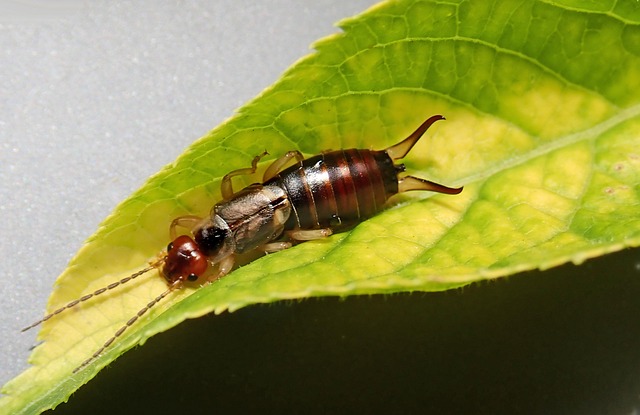Integrated Pest Management (IPM) offers a safer, eco-friendly approach to home pest control that minimizes reliance on chemical pesticides. By integrating biological controls, cultural practices, and mechanical methods like regular inspections, sealing entry points, and using non-toxic products, IPM promotes long-term prevention and effective elimination of pests while fostering a healthier environment. This holistic strategy ensures sustainable home pest control through tailored treatments, organic repellents, and monitoring, reducing health risks and maintaining ecological balance.
“Tired of battling pests in your home? Discover the power of Integrated Pest Management (IPM) for effective, long-lasting solutions. This holistic approach to home pest control goes beyond chemicals, focusing on balancing ecosystems and preventing infestations.
In this guide, we’ll explore the benefits of IPM programs, from reducing chemical exposure to promoting a healthier environment. Learn about key components like monitoring, cultural practices, biological controls, and more. We’ll also provide practical tips to maintain a pest-free haven using natural, sustainable IPM techniques.”
Understanding Integrated Pest Management (IPM) for Homes
Integrated Pest Management (IPM) is a holistic approach to home pest control that focuses on long-term prevention and minimal environmental impact. Unlike traditional methods, IPM doesn’t rely heavily on chemical pesticides but rather combines various strategies to manage and eliminate pests. These strategies include biological controls like introducing natural predators, cultural practices such as sanitation and exclusion techniques, and mechanical methods like trap and physical removal.
By adopting IPM principles, homeowners can create an environment that discourages pest infestations while ensuring the safety of their families and pets. This approach prioritizes prevention through regular inspections, proper maintenance, and the use of non-toxic or least-toxic pest control products. In essence, IPM empowers homeowners to take a proactive stance against pests, offering a more sustainable and effective solution for home pest control.
Benefits of Implementing IPM Programs
Implementing Integrated Pest Management (IPM) programs in homes offers a multitude of benefits that go beyond traditional pest control methods. Unlike chemical-heavy approaches, IPM focuses on a holistic strategy that considers the ecosystem within and around your home. By understanding pests’ behaviors and life cycles, IPM techniques aim to minimize the use of synthetic pesticides, making them safer for both residents and the environment. This approach also promotes long-term pest prevention by targeting specific needs rather than relying solely on chemical interventions.
In the realm of home pest control, IPM programs encourage the adoption of environmentally friendly practices such as regular monitoring, proper waste management, and the introduction of natural predators or repellents. These methods not only reduce health risks associated with pesticides but also foster a healthier living environment. Additionally, by integrating various control tactics, IPM can be more effective in managing pest populations, ensuring that your home remains protected without compromising on safety or sustainability.
Key Components of an Effective IPM Strategy
An effective Integrated Pest Management (IPM) strategy for homes involves a combination of proactive and reactive methods that minimize the use of synthetic pesticides. The key components include regular inspections to identify pest presence, targeted treatments using non-toxic or least-toxic methods, and prevention strategies like sealing entry points and maintaining cleanliness. Homeowners should also cultivate natural predators such as ladybugs and spiders, and utilize physical barriers like traps and nets.
Incorporating organic repellents and beneficial insects into the IPM program can further reduce pest populations naturally. Regular monitoring and record-keeping are essential to track pest activity and treatment effectiveness. This data informs future decisions, ensuring that the strategy remains tailored to the specific needs of the home and its environment, thereby providing a more sustainable and efficient solution for home pest control.
Tips for Maintaining a Pest-Free Home Using IPM Techniques
Maintaining a pest-free home using integrated pest management (IPM) techniques is achievable with consistent vigilance and eco-friendly practices. Regular inspections are key; identifying potential entry points for pests like cracks or gaps around windows and doors allows for prompt sealing. Keeping your home clean, especially kitchen areas, minimizes food sources that attract insects. Proper waste disposal and sanitization are crucial to preventing pest breeding grounds.
Implementing a multi-layered approach is effective. This includes using physical barriers such as screens and traps, along with biological control methods like introducing natural predators or using beneficial bacteria. In addition, maintaining a well-trimmed landscape and removing debris reduces harborage sites for pests. Remember, combining these strategies creates an integrated system that disrupts pest life cycles while minimizing the use of synthetic chemicals, making it a more sustainable home pest control method.
Integrated Pest Management (IPM) offers a comprehensive and eco-friendly approach to home pest control, replacing harmful chemical sprays. By focusing on prevention, monitoring, and targeted treatments, IPM programs can effectively manage pests while minimizing risks to human health and the environment. Adopting these strategies not only keeps homes pest-free but also contributes to a healthier living environment.
